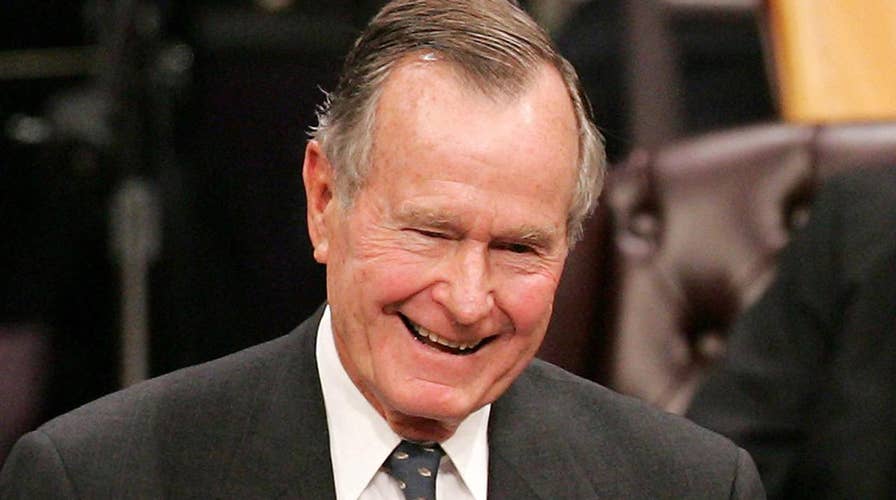The life and times of George H.W. Bush
George Herbert Walker Bush took office in 1989 as the 41st U.S. president and served one term in the White House. The father of former President George W. Bush, he was a Naval aviator in World War II, a congressman, ambassador to the United Nations, envoy to China, CIA director and vice president for two terms under Ronald Reagan.
After the inauguration on Jan. 20, 1989, George Bush and I walked over to the east front of the Capitol to say goodbye to Ronald Reagan. A few moments later, as we watched the helicopter carry off the 40th president, I heard the 41st say quietly: “There goes a man who was very good to me.”
This was the end of Bush’s eight-year partnership with Reagan and the beginning of his partnership with me. And though ours would last for just one term, it could hardly have been more collegial, uncomplicated or free of tension. We were friends who quickly became close friends. We remained so through all the years since, right up until his passing.
Vice presidents don’t always stay on the best terms with the presidents they serve. What starts out as partly a political calculation, the selection of a running mate, is by no means certain to mature into warm friendship. In our case, what made all the difference was a few choices we made early—and the character of Bush himself.
It helped that the president was also my predecessor as vice president. He knew the job and its potential hazards—staff rivalries, unaligned agendas, the usual guessing game about the No. 2 man’s further ambitions. Bush had figured out how to steer clear of those troubles, and also how to make the most of a position with little executive authority. No one in the Reagan administration had more international experience than Vice President Bush. He knew the world, and most of the major players personally. He put all his strengths in the service of the Reagan agenda.
Keep reading Dan Quayle's column in the Wall Street Journal.

